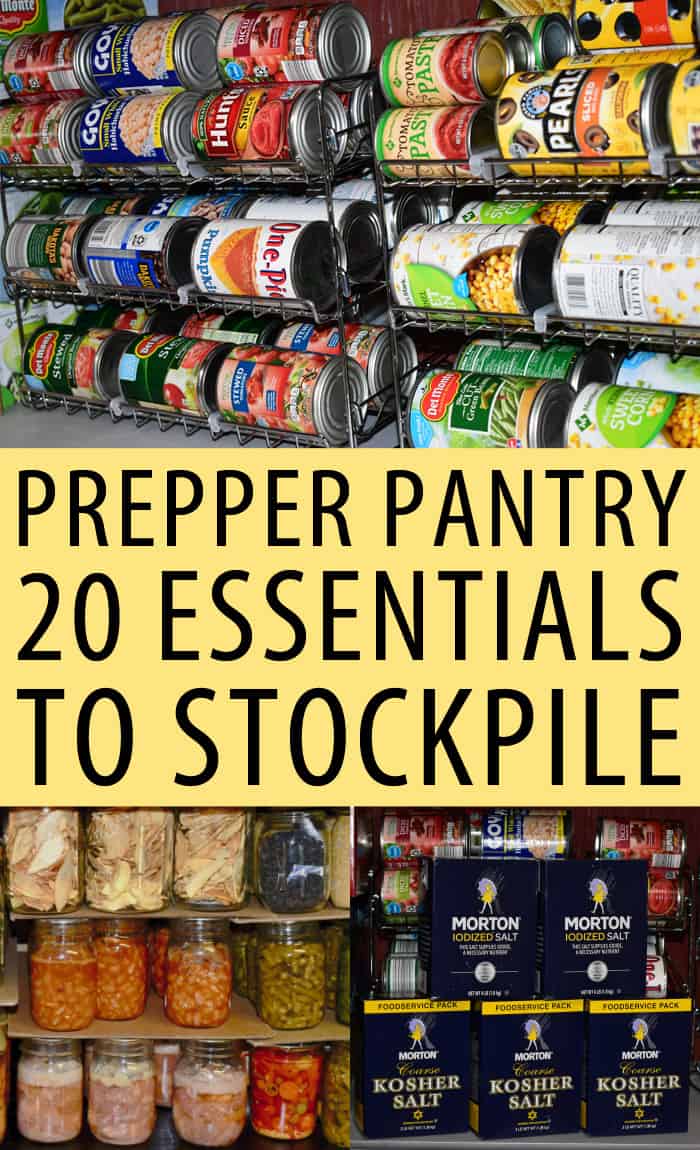Many preppers focus on the big and spectacular. EMPs, maxed out bugout vehicles, enough guns and ammo to outfit a small country. Oh, let’s not forget that pallet of food.
While this is admirable, the rest of us only have the means to focus on more immediate threats. With limited funds, we have to focus on normal life and prepare in more practical ways.
I have previously stated my fondness for a well-developed and thought-out Threat Matrix. I use this tool to identify what is most likely to affect my safety and survival. Yes, CMEs, EMPs, nuclear war, and cyber-attacks on the electrical grid are all on there.
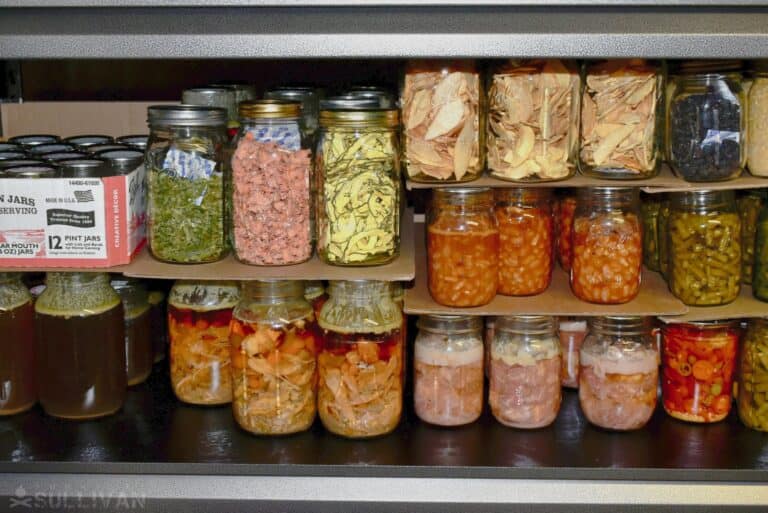
That being said, I have put my most of my efforts into more probable occurrences. These include natural disasters, power outages, job loss, and medical emergencies.
When one of these more probable items happens, I still need to have my preparations in place. For example, I will eventually lose my job, if I’m lucky I will call it retirement. A well-stocked prepper pantry will benefit me more during a job loss than say a bulging armory.
During the vast majority of challenges that you will face, a well-supplied pantry will keep you fed, healthy, and a lot happier than many other recommended preps. Let’s look at the contents of such a pantry, and how to update yours.
Goals
First, Let’s define a prepper pantry. I consider a stocked-up home to have three levels of food storage. First, there are your kitchen cabinets. These contain food you use every day.
Boxed side dishes such as rice and stuffing. Flour and sugar for baking. Then all the secondary items such as spices. We are in these cabinets several times per day
The next level we all think about is long-term storage. Buckets of beans and rice that we hope to never have to use, but if life goes sideways, they are there. If not. The kids get a strong start on preparing when they inherit them.
The prepper pantry sits between these two. Think of your pantry as a personal grocery store. You won’t go “grocery shopping” in there every day. But when you do, you’ve just saved yourself from a trip to the store.
How Do You Stock It?
One of the complaints, or concerns rather, that I hear from beginning preppers who are undertaking the task of putting together their prepper pantry is how they figure out what the stock and how much.
Admittedly, if you’re starting from zero with little information on the matter and no clear objective it can seem positively overwhelming.
You just start duplicating what you buy at the grocery store on a weekly basis, putting some of it away? Do you only pick things that will store the longest, or things that will offer the most calories in the least amount of space? Do you just buy what you like?
The real answer is all of the above- at least in part! The stock of your prepper pantry should be nutritious, long lasting and hopefully be things that you actually like to eat, or at least close facsimiles thereof. We’ll talk about each of these factors below.
Storage Conditions and Time
You won’t be in your pantry every day. In fact, a few dark corners of mine are lucky to get a visit once a year. You need to stock yours with this in mind. Anything you add to your pantry must be good for a minimum of 6 months.
Next, pantry foods need to be tolerant of minor temperature fluctuations. Most of us will locate our pantry somewhere convenient. This usually means the main floor of the house.
Being outside of the basement, the temperature may get warmer and fluctuate more. Make sure that everything you choose is tolerant of a little temp variation.
Nutrition
Second, you need to pay attention to nutritional balance. We all love to store beans and rice, but you need balance. Your pantry needs to contain meats, dairy, vegetables, and fruits in addition to your grains.
Any diet made of one food will eventually starve you. While rice fills you up, and gives you lots of carbohydrates, you will eventually die with that full belly.
There is much more to nutrition than what any single food can give you. Therefore, make sure you cover the nutritional bases with your pantry.
Variety
Next is variety. After all, it is the spice of life. There are a few foods I think I can live on for a few weeks, but after that the monotony sets in. And I’m pretty tolerant when it comes to food.
Include variety in your plans. Mostly this comes as spices. But sometimes it’s just pure cooking skills. Make sure you have the tools to switch things up and fight off food fatigue.
Rotation
Finally, consider rotation. As this is a deep pantry that is not at the forefront of your mind, you need to have a minimal organizational system. A bulging 10-year-old can of corn does you no good when you need it. Eat through your pantry regularly. Most of all, replace everything you eat!
Rotation does not apply directly to the foods, just in how you use them. That being said, it is just as important as the food itself. We all work hard for our prepping dollars. We can’t waste it even on a simple case of vegetables.
How Much Space Should I Devote to My Prepper Pantry?
The next biggest question is always how much space one should have, or be willing to devote to your survival pantry. There is no clear or easy answer on this, because there are so many variables regarding your living space, your lifestyle, your resources and your overall plan.
The best answer, of course, is to devote as much space as you need to it. A prepper pantry is an investment in your future health and well-being it is worth far more than the money you’ll spend on shelving and stocking it. You can buy all sorts of survival gear for a rainy day, but you can’t eat it!
On the other hand, some people are dealing with very real space restrictions. Some of these are legitimate, in the form of a lack of square footage or just a lack of unused space in the home. Others are more esoteric, perhaps a protesting spouse or competing storage needs.
In any case, where there’s a will there is usually a way. Your main pantry can be expanded, or an un- or under-used room can be turned into useful storage for the purpose.
If both of these options are complete non-starters, it is possible to stash your goods and out of the way places, in closets, at the top of cabinets, under beds in tubs, etc. It is definitely not ideal, and it makes inventory and rotation chores a major pain in the butt, but it can be done.
How Much Food Do I Really Need?
Again, there is only one true answer, and that is as much as you can get. You’ll be far happier having it and not needing it then you will be when needing it and not having it. However, a more refined answer will take into account things like finances, overall objectives, family size and so forth.
I personally like to shoot for a standard of 2,000 calories per person in the family per day, for a period of 90 days. That is a legitimate 3-month supply of food according to the recommendations that we will outline in the rest of this article.
If you have a varied menu, this will supply virtually all the vitamins and other nutrients that a body needs, and in times of real peril you can always ration this further to extend your stores.
But from here, the sky is the limit. You can, and probably should, work your way up to a true six-month supply as your goal, and consider storing a one-year supply in conjunction with your long-term food storage.
Prepper Pantry Essentials
Let’s jump into the items you should store in your personal grocery store. Keep in mind that this list is simply a guideline. If you don’t like rice, then don’t store it, but find something to replace it.
Rice
It’s not surprising that rice is a foundational food of your pantry. From breakfast (congee) to dinner (rice on the side), to dessert (rice pudding) rice is almost the perfect food. It is cheap, and stores forever.
The primary consideration is how to store larger quantities. Most rice comes in a bag. You will want to keep critters and oxygen.
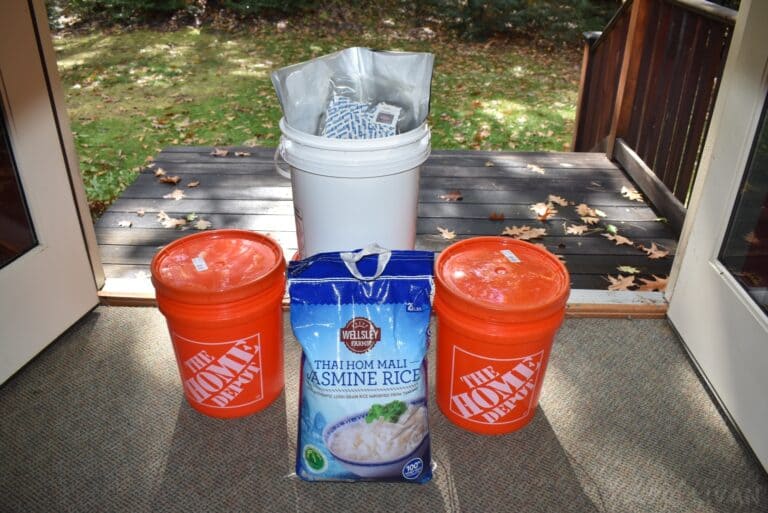
Most bags are permeable, and don’t help with long-term food security. Repackage your rice before you add it to your pantry. A 5-gallon bucket works just fine. Or use a more “Martha Stewart” accepted container. Your call.
Beans
Beans and rice. Rice and beans. The two go hand in hand for good reason. They are cheap, filling, and you can put both away for years. In your pantry consider variety. Get several types of beans, and experiment with them. Experiment with rice, and especially without rice.
Your pantry should not only hold foods you eat every day. You should also use it to introduce prepper-oriented foods. Store some new foods in small quantities and make a point to try a new recipe.
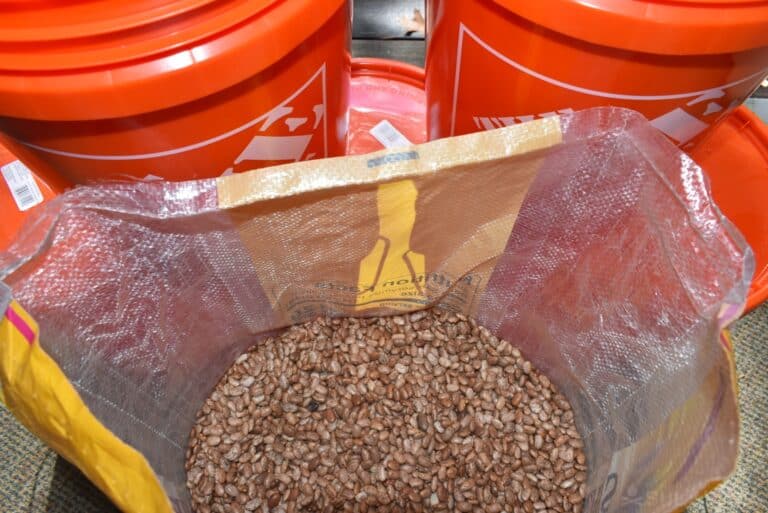
Pinto bean brownies look awful good to me – and I already have all the ingredients in my prepper pantry. No reason not to try them now before times get rough, and learn how to package them for the long-term.
Oats
Oats are another great prepper food. Oatmeal for breakfast sticks to your ribs, warms you, and starts the day off right. It also makes a great meal extender. Especially with ground meat. My mother always stretched her meatballs, burgers, and meatloaf with a handful of rolled oats.
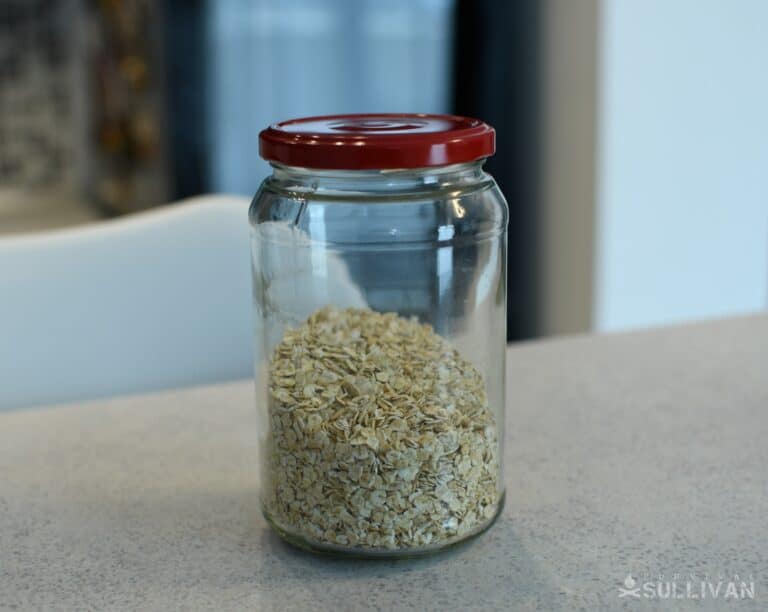
Like rice, make sure you store your oats in a durable container.
Pasta
What would life be without a plate of pasta? Properly packaged dry pasta stores for decades. You don’t need that for your prepper pantry; however, you will want to store plenty of it.
The nice thing about pasta is there are so many varieties and uses. Mac and Cheese, spaghetti, lasagna, the list goes on! When pasta goes on sale get several pounds. Get as many varieties as possible and don’t be afraid to experiment.
Cornmeal
I will admit that my skills with cornmeal are pretty limited. We use it for cornbread, grits, and dusting a pizza stone when making bread. But frankly, that’s enough for me to have a few pounds in the pantry.
Pick up a pound or two, and start experimenting. It’s a great way to add variety to your grains, and to add calories to your storage.
Wheat
Wheat berries are a favorite long-term storage item, but I wonder how many preppers put them to daily use. We have a few pounds in the long-term pantry specifically for boiling like rice. We eat them as a side (the texture is wonderful), or add them to salads.
Hard red or white wheat can be a little harder to find in your local grocery store But look around. If you don’t have any luck, try online.
Quinoa
Quinoa is an interesting food. Not classified as a grain, but we cook it like it is. It is also high in protein. In fact, it is considered a complete protein as it contains all nine amino acids.
Quinoa is a fantastic substitute if you have a gluten allergy. It also stores well. Properly packaged (avoid light, heat, oxygen), its shelf life can go beyond 5 years.
Canned Fruits, and Vegetables
The first few recommended pantry items were all long-term storable carbs. Now it’s time to change things up a bit and store canned goods.
Start with fruits and vegetables: tomatoes, green beans, fruit cocktail, etc. You will need the variation in your diet for digestive health.
Most canned goods are fine as long as their seals hold out. This can be years beyond the “Best By” date. The best approach is to fill up your shelves, then actively rotate.
This is another place where you need variety, and should experiment. Get cans of every fruit and veggie you like and then try a can or two that are outside of your comfort zone. You never know when you will find a new favorite.
Canned Meats
You will also need protein. The issue is that canned meat is expensive. You don’t need a three-month supply immediately. Take your time. A few cans every grocery trip add up.
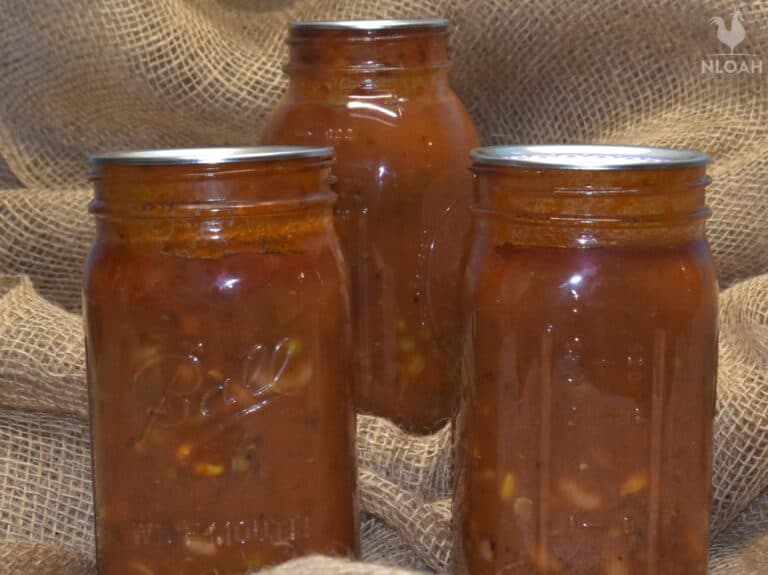
Canned chicken, tuna, salmon, and corned beef are all available in small servings. Spam is, as always, a great a surprisingly clean choice. Canned hams are available in 1-pound cans.
They are easy to stack up, and last for over 2 years, or you can learn to can your own meat – just be careful to always follow the canning recipes to the letter.
Flour
Moving beyond breakfast, lunch, and dinner, it’s time to maintain the ability to bake. If you don’t have the skills now, practice baking bread.
Once you have that mastered stock up on bread flour and all-purpose flour. This will cover all your baking needs. Don’t forget to repackage the flour in a sturdy container rather than the original paper sack.
Sugar (White/Brown)
Sugar is an adjunct to many recipes and needs a place in your pantry. Sugar is cheap, available in bulk, and stores forever.
Aside from protection from insects, you only need to protect your pantry sugar from moisture. If your sugar gets damp, it will solidify into a solid chunk. If this happens, don’t despair. A few minutes with a rasp or a hammer will make the sugar granular again.
Your pantry needs both white and brown to cover all uses. If you normally use specialty sugar, store some of that as well.
Honey
Speaking of sugar, honey is a must-have on the list for two reasons: one, it’s unlimited shelf life, and two, the fact that it is jam-packed with calories. If you’re anticipating a bug out, you may also dehydrate honey to remove its water contents, and make it light enough to carry it to your bug out location.
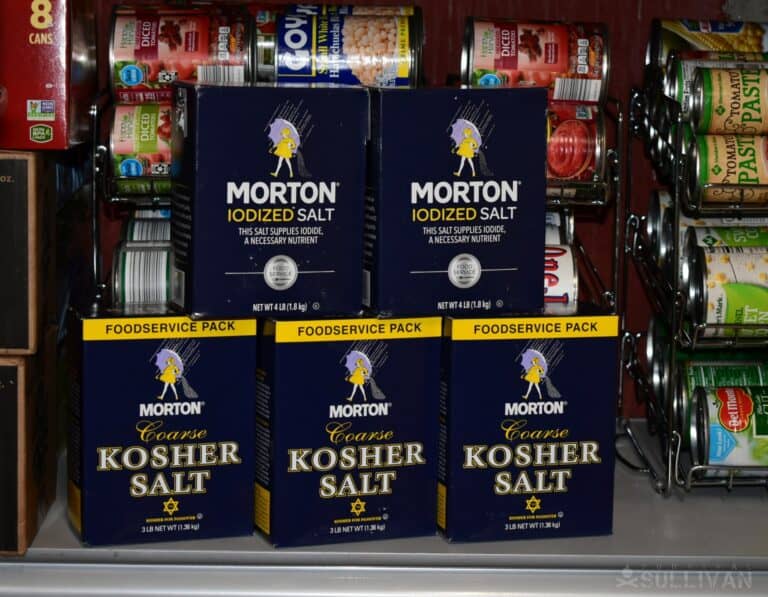
Salt
Salt is essential for life. We get enough on our normal diet. We probably get too much. Even if we do, you need some to cook with.
In a long-term situation, you will also need extra salt on hand for curing and preserving food. It’s better to have some extra, even if it’s in your pantry. Learn now about lacto-fermentation. It’s as easy as dedicating enough room in your refrigerator for a quart jar or two.
Vinegar
Vinegar is another one of those do-it-all preparations. It has medicinal, hygiene, cleaning, and cooking uses. Aside from adding to the occasional dish, one of our household’s biggest uses is food preservation.
If you do not practice it already, learn how to can. Many recipes call for vinegar. Pickling, brining, even making biltong all use vinegar.
The best part is that vinegar does not expire. It’s one food you can put in the dark corners and forget about for a little while. Apple cider vinegar, red wine vinegar and white wine vinegar are all acceptable.
Oils and Fats
We need fat in our diet. Period.
Not only are fats and oils dense with calories, but they also improve flavor and “mouth feel.” Toast is ok. Toast with lots of melted butter is one of life’s simple pleasures.
One caution for your pantry. Fats and oils oxidize, and go rancid. Therefore, you must set up a rotation schedule for any fats and oils in your pantry. Mark them with a visible expiration date, and use them before spoilage sets in..
Coffee and Tea
Not sure I really need to belabor the point of having enough coffee in your pantry. If you don’t think so, go for a week without your morning drink of choice. After you get over the shakes and headaches, stock up.
It will be worth it to get coffee and tea in different “states.” For coffee get a little instant, some pre-ground, and then some whole roasted beans. Make sure you know the best preparation for each.
As for tea, get both bags and bulk leaf with an infuser. Tea is my morning drink, and I take a lot of pleasure in that first sip. I have made sure I have a few pounds on hand, properly sealed to last a long time, so it will be a long while before I’m forced to have a tea-free morning.
Bullion
Bullion is used to enhance a simple broth, form a soup base, and season simple meals. During times of stomach distress, it can also nurse you through the first few days of recovery.
Your purchase of cubed bullion or the types that come in small tubs is a matter of preference. Both last a good long while as they are mostly made of salt.
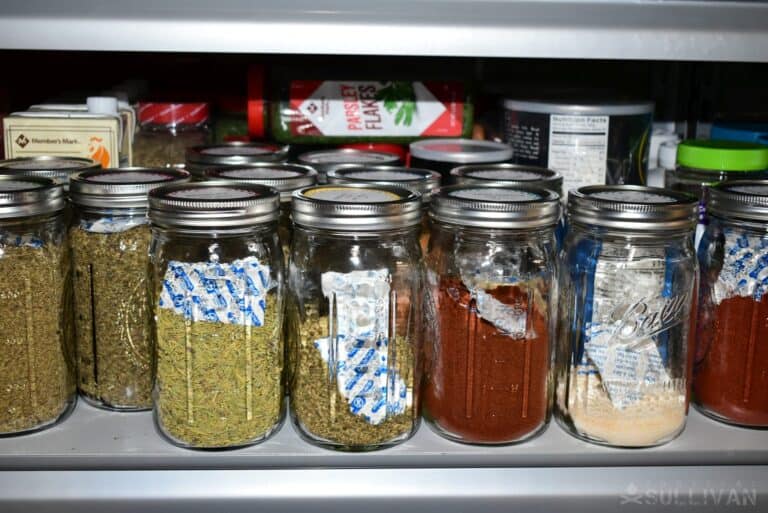
Spices
Not sure about yours, but my life would be a lot less exciting without spices. Both our kitchen cabinets and pantry are stocked. If we ever have to bug out, the spice box goes first. When we open our off-grid cabin in the spring, the spice box is the first one that we unpack.
Now is the time to stock up on spices. Unless you are a culinary snob, it is OK if they lose a little potency over time. Just add more. If there are a few spices you are particular about, rotate them more often to keep them fresh.
Spices are another area to expand and have fun with. Grab a small amount of a spice you don’t normally use, and experiment with it. If you like it, buy a bit more to stock up.
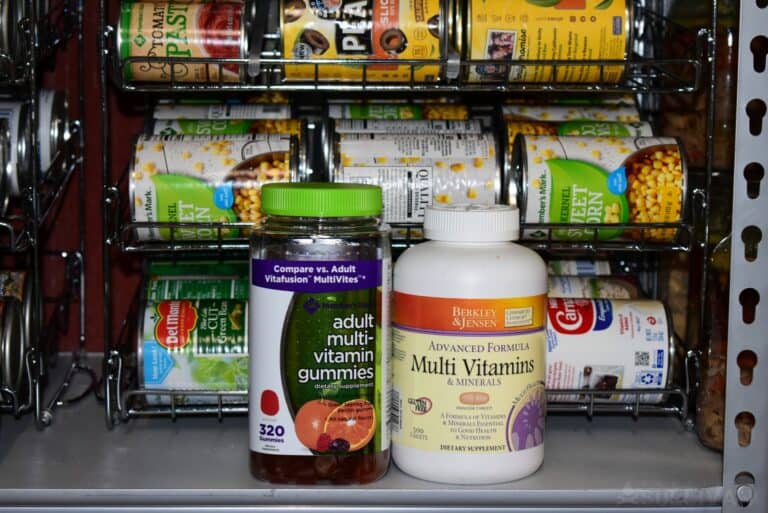
Vitamins
During times of stress, as well as lean times, we all need a little nutritional boost. Vitamins can fill the gaps when we aren’t eating as diversely as we should. A collection of a quality multi-vitamin is a must for every diet, and therefore every pantry.
Specialty vitamins are equally important. We don’t get enough sun these days. Therefore, during flu season, vitamin D can help fend off the flu, and shorten its severity. There are good reports about zinc combating the cold and flu as well.
Another recommended vitamin to stock for stressful times is B Complex. B vitamins have good evidence that they reduce stress, boost mood, and reduce symptoms of depression and anxiety. Again, experiment and stock up.
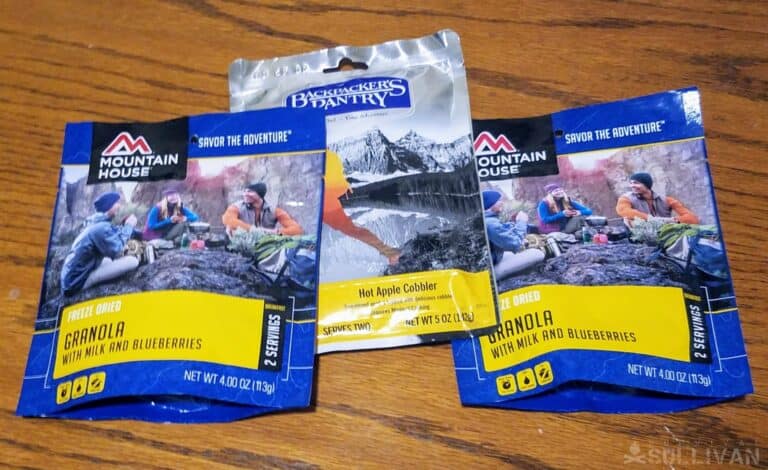
Freeze-Dried Meals
Don’t neglect full meals. Camping meals, MREs and other survival food all have their place even in a well-stocked prepper pantry.
There will be times in your life when you just want to eat in 10 minutes with little to no effort. I recommend freeze-dried meals for two reasons: familiarity and longevity.
You need to get familiar with emergency foods now. During down times, life will be stressful enough without adding a completely new meal plan. Use your pantry to get yourself familiar with freeze-dried foods.
Most freeze-dried meals can be stored for decades. After you have tried some and found ones that your family likes, stock up. With the long shelf life, you can afford to pop them in the dark corners of the pantry.
Condiments
One element of a prepper pantry that I sometimes see neglected is that of condiments. Condiments will rarely provide much in the way of genuine nutrition, but they can do an awful lot when it comes to variety and boosting morale.
You can, and should, keep ketchup, mustard, mayo, barbecue sauces, syrup and any other toppings on hand that are shelf stable in accordance with the rest of the food items on this list.
Sometimes having that perfect topping on one of your favorite dishes is just the thing to help keep your head in the game when times are tough.
It’s Not Just Food You Need in Your Pantry!
Last but certainly not least, don’t forget that there are certain things that deserve a spot in your pantry that are not food themselves. This can be things like coffee filters, tea sachets if you have loose leaf tea, disposable plates and cutlery, paper towels, napkins and so forth.
All of these things can make preparing your food easier or more convenient, or help minimize logistical problems when it comes time to clean up, a potential concern if water is scarce or non-existent.
Luckily, pretty much all of these things will last forever so as long as they are stored in a cool, dark place and you’ll only need to inspect them every once in a while.
Wrapping Up Pantry Essentials
A deep pantry is the foundation of a prepper’s home food life. The more food we have in our house, the fewer are our trips to the grocery store. Ultimately, this limits our contact with others and reduces our dependence on daily shopping.
The deeper your pantry, the less you will have to stock up at the last minute. The key is to stock it intelligently with foods that will last, are nutritionally balanced, and that you use regularly. You don’t want to duplicate your long-term storage, and you can’t simply add depth to your kitchen cabinets.
Stock your prepper pantry with the essentials that keep your household cooking through short-term disasters. These 20 items will get you started on the path to a well-stocked pantry, but be sure to take these recommendations and ultimately make them your own!

My passion is empowering people with the knowledge to prepare for personal, local, and regional emergencies. I went to school for engineering and computer science and spend my days in the security industry.

